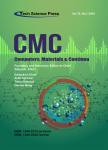High-Secured Image LSB Steganography Using AVL-Tree with Random RGB Channel Substitution
作者机构:Center of Cyber Security Faculty of Information Science and Technology Universiti Kebangsaan Malaysia Selangor Bangi 43600 Malaysia Computer Science and Cyber Security Faculty of Engineering and Information Technology BirZeit University Ramallah P.O. Box 14 BirZeit Palestine
出 版 物:《Computers, Materials and Continua》 (计算机、材料和连续体(英文))
年 卷 期:2024年第81卷第1期
页 面:183-211页
核心收录:
学科分类:08[工学] 0812[工学-计算机科学与技术(可授工学、理学学位)]
基 金:Universiti Kebangsaan Malaysia UKM
主 题:AVL tree capacity Image steganography imperceptibility peak signal-to-noise ratio (PSNR) pixel random selection (PRS)
摘 要:Random pixel selection is one of the image steganography methods that has achieved significant success in enhancing the robustness of hidden data. This property makes it difficult for steganalysts’ powerful data extraction tools to detect the hidden data and ensures high-quality stego image generation. However, using a seed key to generate non-repeated sequential numbers takes a long time because it requires specific mathematical equations. In addition, these numbers may cluster in certain ranges. The hidden data in these clustered pixels will reduce the image quality, which steganalysis tools can detect. Therefore, this paper proposes a data structure that safeguards the steganographic model data and maintains the quality of the stego image. This paper employs the Adelson-Velsky and Landis (AVL) tree data structure algorithm to implement the randomization pixel selection technique for data concealment. The AVL tree algorithm provides several advantages for image steganography. Firstly, it ensures balanced tree structures, which leads to efficient data retrieval and insertion operations. Secondly, the self-balancing nature of AVL trees minimizes clustering by maintaining an even distribution of pixels, thereby preserving the stego image quality. The data structure employs the pixel indicator technique for Red, Green, and Blue (RGB) channel extraction. The green channel serves as the foundation for building a balanced binary tree. First, the sender identifies the colored cover image and secret data. The sender will use the two least significant bits (2-LSB) of RGB channels to conceal the data’s size and associated information. The next step is to create a balanced binary tree based on the green channel. Utilizing the channel pixel indicator on the LSB of the green channel, we can conceal bits in the 2-LSB of the red or blue channel. The first four levels of the data structure tree will mask the data size, while subsequent levels will conceal the remaining digits of s



